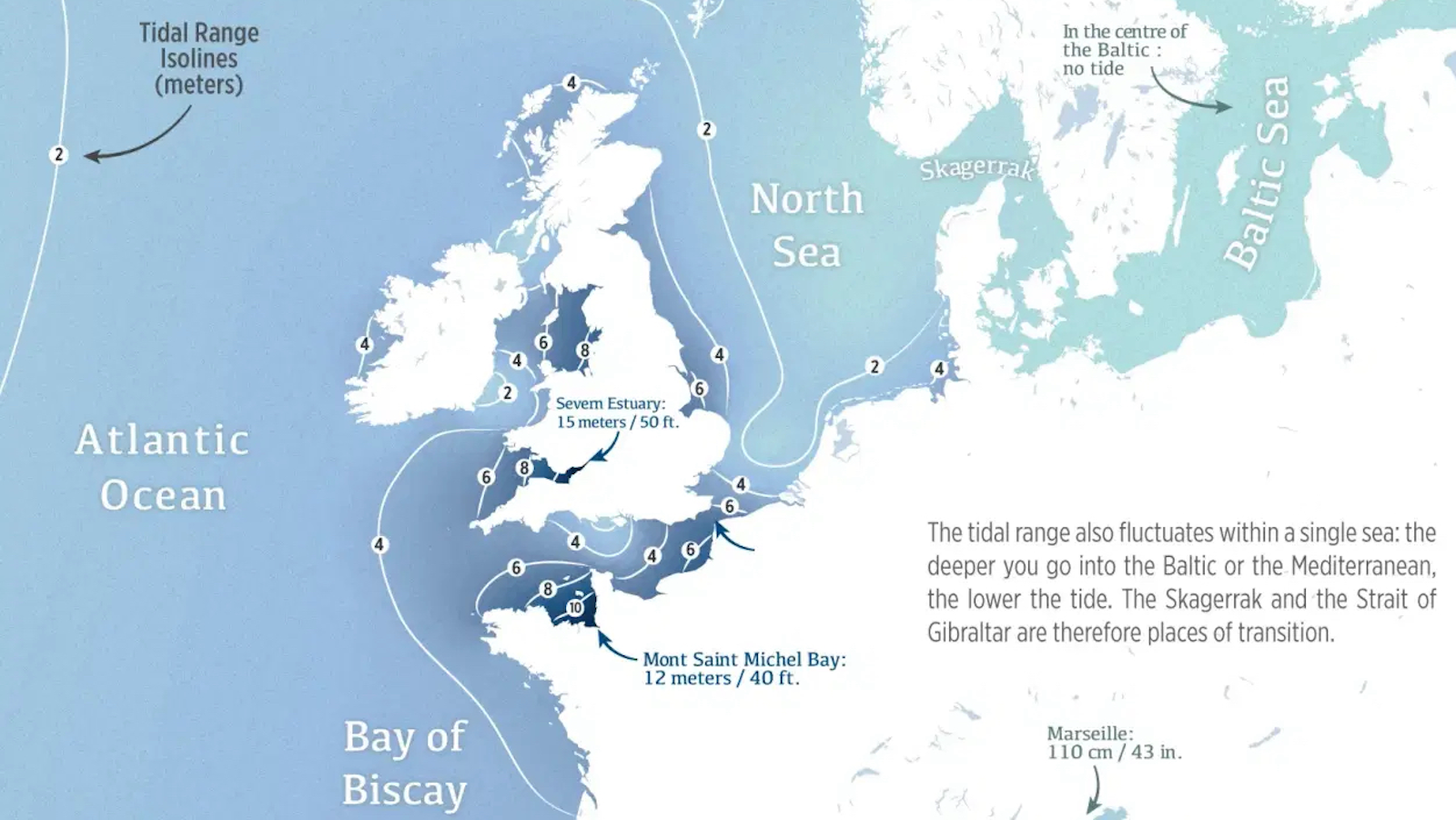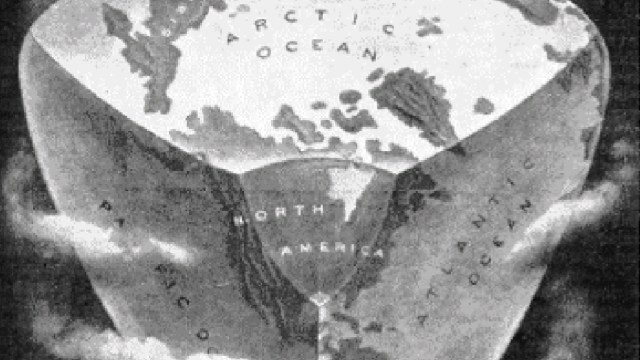76 – Driving Orientation: A World Map
n
Another traffic map of sorts. If this world map vaguely looks like it’s highlighting a remnant of the British Empire, that’s no coincidence. This map shows which side of the road traffic drives on.
n
Dark blue: drives on left (mainly British ex-colonies).
nLight blue: used to drive on right, now on left (Namibia).
nPurple: used to have mixed system, now drives on right.
nLight red: used to drive on left, now on right.
nDark red: drives on right.
n
As one might gather from the map, the story of left or right hand side driving is more than just a derivative of British Imperialism. Right-handedness, a trait shared by 85 to 90% of people, is the reason for the initial preference for left and for the switch to right side driving.
n
Throughout the ages, horsemen preferred passing each other on the left side, because this allowed them to hold on to the reins with their left hand while with their right they shook hands with or swords at passers-by (as the situation warranted).
n
In the late 1700s, teamsters in many countries switched to bigger freight waggons drawn by multiple pairs of horses. They would sit on the left rear horse, thus able to whip with their right hand. This allowed them better vision on their left-hand side, so they preferred the opposing traffic to cross them on the left – meaning they switched to driving on the right-hand side of the road. So nowadays, an estimated 66% of people worldwide live in right-hand side countries, and 72% of all distances are completed while driving on the right side of the road.
n
Britain was the main exception: smaller waggons meant the driver was able to sit on top of them, not needing to ride one of the horses. British drivers remained seated on the right-hand side, and thus kept driving on the left-hand side of the road. This British custom would be adopted in most if not all British colonies, at least initially.
n
One of the main promulgators of driving on the right was revolutionary France, at that time Britain’s arch-enemy, thus lending a ‘political’ subtext to this purely practical question. France spread the practice to most of the countries it conquered at the turn of the 19th century.
n
Even in spite of France’s revolutionary conquests, several European countries other than Great-Britain kept their traffic on the left of the street. Most eventually made the switch to right side driving: Finland (1858), Russia (at the end of the Czarist era), Italy (1924), Portugal (1928), Austria, Czechoslovakia and Hungary (all three in the Nazi era), Sweden (1967) and Iceland (1968). One boy broke his leg due to that last European switch. Today, the only European countries driving on the left of the road, excepting Britain, were once ruled by it: Ireland, Malta and Cyprus (including the separate but internationally unrecognised Turkish republic of Northern Cyprus). Ironically, Gibraltar, the last colony in Europe and still ruled by Britain, switched to right-hand driving in 1929.
n
Many former British colonies outside of Europe continue to drive left: India, Pakistan, Hong Kong (even though it’s been returned to right-side driving China in 1997), Australia, New Zealand and the former British colonies in the West Indies. Macau and Mozambique also drive on the left. Colonies of Portugal, they opted for the ‘British’ side of the road due to proximity to British colonies. This may also be why Suriname, a former Dutch colony in South America, drives on the left: its neighbour is the ex-British, left-driving country of Guyana. Those two countries are the last on continental America to drive left.
n
Many other ex-British colonies did change to driving on the right, as with Gibraltar mostly to conform to the practice on the other side of the border. In Canada, the practice varied between the provinces and territories. The switch to the right side took place from 1920 onwards, to be completed by Newfoundland in 1947. Other cases in point: Belize (1961), the Gambia, Ghana, Nigeria, Sierra Leone and Burma (1970).
n
The introduction of right-side driving sometimes did coincide with anti-British politics. This certainly was a factor in the American switch (the USA went right-side not long after independence, from 1792 onwards). And both on the Channel Islands, occupied by Germany in 1940, as on the Falklands, occupied by Argentina in the early 1980s, right-side driving was imposed, only to be reversed when both territories were reconquered by the British.
n
In spite of all the preceding, the choice of which side to drive on can not be reduced to a matter of British influence or not. Japan, Indonesia, Thailand, and the US Virgin Islands were never British colonies, but today they too drive on the left. An overview of left-side driving countries per continent:
n
Africa: Botswana, Kenya, Lesotho, Malawi, Mozambique, Namibia, South Africa, Swaziland, Tanzania, Uganda, Zambia and Zimbabwe. (off Africa: ) Mauritius, Saint Helena, Seychelles.
n
Asia: Bangladesh, Bhutan, Brunei, East Timor, Hong Kong, India, Indonesia, Japan, Malaysia, Maldives, Nepal, Pakistan, Singapore, Sri Lanka, Thailand.
n
In the Carribbean: Anguilla, Antigua and Barbuda, Bahamas, Barbados, Cayman Islands, Dominica, Grenada, Jamaica, Montserrat, Saint Kitts and Nevis, Saint Lucia, Saint Vincent and the Grenadines, Trinidad and Tobago, Turks and Caicos Islands, British Virgin Island, US Virgin Islands.
n
On mainland America: Guyana and Suriname. (off mainland America: ) Bermuda, Falkland Islands.
n
In Oceania: Australia and dependencies, Cook Islands, Fiji, Kiribati, New Zealand, Nauru, Niue, Norfolk Island, Papua New Guinea, Pitcairn Islands, Solomon Islands, Tokelau, Tonga, Tuvalu.
n
In Europe: Great Britain and dependencies (Channel Islands, Isle of Man), Cyprus, Ireland, Malta.
n
Upon review, the map does not correspond to all the info given here (for example, the text says Russia switched to right side driving while the map shows it always did); however both the map and the explanations were taken from the Wikipedia page about left-hand driving.
n






